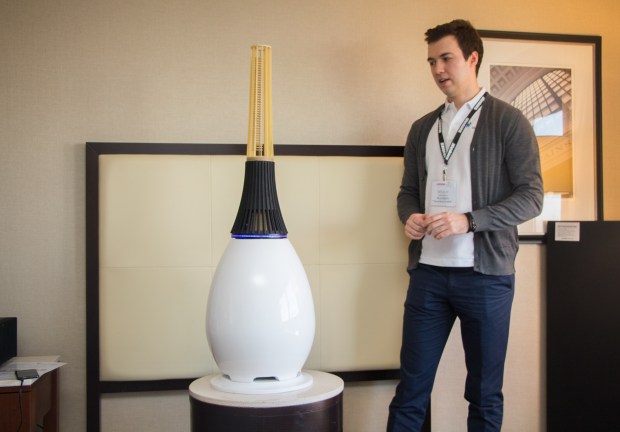Wrap Up Part 2 – AXPONA 2016

Like most cable companies Kimber Kable has a wide variety of connectivity options for consumers, but at AXPONA’s Ear Gear eXpo they only had one on display – their new AXIOS headphone product. The hand-built braided cable is constructed from 8 strands of 24AWG wire and features no solder joints at the Y split.
Regardless of where you stand on the wire debate among audiophiles, I think that a upgrades like this look like a fine aesthetic addition from the standard black-and- rubber sheaths of default cabling. There are few things more irritating that a cable with a pop-and-crack connection going on in your rig, so a few non-subjective benefits do exist for those who want the best for their entertainment time.

More specs for the AXIOS include dabbling with OFHC copper wire and 16 FEP insulated 24 gauge stranded conductors. The cable can be made for the entire Audeze LCD line (including EL-8), Dharma D1000, HiFiMAN HE1000, Mr. Speakers Ether, Pioneer SE MASTER-1, Sennheiser HD800 and HD650, Sony MDR-Z7 and any pair of cans sharing these headphones’ connections. Prices start and $698 for 1.2 meters and work their way up from there.

A relatively new brand of IEM (to the US) could also be spotted on the show floor of EGX called Dita. Dita’s The Answer IEM starts at $650 and sports a 10mm dynamic driver to do its monkey business. The Answer also has an upgrade “Truth” edition with a Van den hul cable for $1k ($1.1k for balanced). The final product ships with an assortment of tips including some that incorporate different bore sizes for “sweeter” or “airier” highs.

One of the most interesting things I saw all weekend was this futuristic prototype of an ion loudspeaker called Waveion. Unfortunately the two units on display in the room couldn’t have been more finicky and were plagued with operational issues for most of the weekend. Mentioning the technology as something “new” will always get you a quick, knowledgeable answer of “that was done 10 years ago”, but I still give the company an exuberant A-for-effort and a cool factor of 2.8x (its a very scientific method of evaluation).

Sweet sweet music is made from molecules turning from negative to positive ions (via the tiny threads you see pictured above) and then assisted by a transducer in the base which pushes air up in a column and then outward. The proposed benefit here is that the technology is able to shed the inherent distortion issues that arise while working within the boundaries of the physical medium that typical paper-cone drivers exist in. So in theory, non-physical ions = less distortion. What I heard at the show did indeed appear to be fairly clear, but was only available at low volume due to some of the previously mentioned finicky-ness.

One of my favorite spaces to stop by at a show has always been the KEF room. Weather your a fan of the flagship blade design or a critic, the company makes plenty of tasty gear at all price points for audiophiles. This year the lower level room was ripe with options again, but the flagship space was filled with the Blade 2, the more affordable of the Blades ($25k vs $32k). Alternating time in the room was the very poplar bookshelf LS50 ($1.5k) which has now become a mainstay in the line after its start as and 50th anniversary model a few years ago.

Outside in the hallway KEF had a few more mainstream products that looked equally intriguing on a smaller scale. The wallet and desktop friendly Egg is even more real-estate conscious than the LS50 and X300 models but still houses a Uni-Q driver the company has become known for. The multi-input device (including bluetooth, aptX, USB and optical) was unveiled in October at Cedia and is currently available for sale via the company site for $500.
Click here for [Wrap up – Part 1].


Hey, Kimber…. $900 for a cable for my HD800S?
NO. JUST NO.
Pingback: Wrap Up – AXPONA 2016 | AudioHead